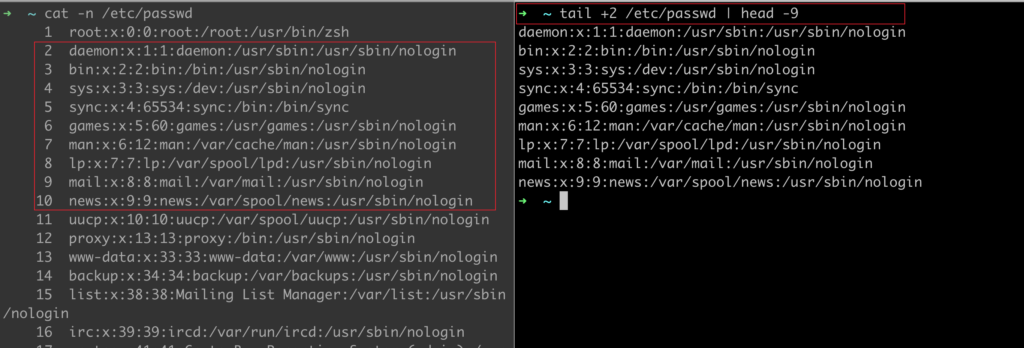Linux head command – output the first part of files.
Print the first 10 lines of each FILE to standard output. With more than one FILE, precede each with a header giving the file name.
syntax
head [OPTION]... [FILE]...options
- -c, –bytes=[-]NUM
print the first NUM bytes of each file; with the leading ‘-‘, print all but the last NUM bytes of each file - -n, –lines=[-]NUM
print the first NUM lines instead of the first 10; with the leading ‘-‘, print all but the last NUM lines of each file - -q, –quiet, –silent
never print headers giving file names - -v, –verbose
always print headers giving file names - -z, –zero-terminated
line delimiter is NUL, not newline - –help
display this help and exit - –version
output version information and exit
examples
Print top 10 lines of file
➜ ~ head /etc/passwdPrint file header specifies the number of lines – head -n
➜ ~ head -n 3 /etc/passwdPrint multiple file information
➜ ~ head -v /etc/passwd /etc/group
OR
➜ ~ head -v -n 10 /etc/passwd /etc/grouphead offset – print 2 to 10 lines of the file
➜ ~ tail +2 /etc/passwd | head -9
linux head skip first line
Use the tail command (tail +n), from line 2 to the end of the file
➜ ~ tail +2 /etc/passwd